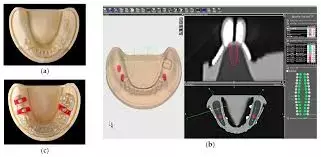- Home
- Medical news & Guidelines
- Anesthesiology
- Cardiology and CTVS
- Critical Care
- Dentistry
- Dermatology
- Diabetes and Endocrinology
- ENT
- Gastroenterology
- Medicine
- Nephrology
- Neurology
- Obstretics-Gynaecology
- Oncology
- Ophthalmology
- Orthopaedics
- Pediatrics-Neonatology
- Psychiatry
- Pulmonology
- Radiology
- Surgery
- Urology
- Laboratory Medicine
- Diet
- Nursing
- Paramedical
- Physiotherapy
- Health news
- Fact Check
- Bone Health Fact Check
- Brain Health Fact Check
- Cancer Related Fact Check
- Child Care Fact Check
- Dental and oral health fact check
- Diabetes and metabolic health fact check
- Diet and Nutrition Fact Check
- Eye and ENT Care Fact Check
- Fitness fact check
- Gut health fact check
- Heart health fact check
- Kidney health fact check
- Medical education fact check
- Men's health fact check
- Respiratory fact check
- Skin and hair care fact check
- Vaccine and Immunization fact check
- Women's health fact check
- AYUSH
- State News
- Andaman and Nicobar Islands
- Andhra Pradesh
- Arunachal Pradesh
- Assam
- Bihar
- Chandigarh
- Chattisgarh
- Dadra and Nagar Haveli
- Daman and Diu
- Delhi
- Goa
- Gujarat
- Haryana
- Himachal Pradesh
- Jammu & Kashmir
- Jharkhand
- Karnataka
- Kerala
- Ladakh
- Lakshadweep
- Madhya Pradesh
- Maharashtra
- Manipur
- Meghalaya
- Mizoram
- Nagaland
- Odisha
- Puducherry
- Punjab
- Rajasthan
- Sikkim
- Tamil Nadu
- Telangana
- Tripura
- Uttar Pradesh
- Uttrakhand
- West Bengal
- Medical Education
- Industry
FTSGs implant surgery may safely improve implant placement accuracy for partially edentulous patients: Study

FTSGs implant surgery may safely improve implant placement accuracy for partially edentulous patients suggests a study published in the Journal of Prosthodontics.
This systematic review and meta-analysis aimed to evaluate the depth distortion and angular deviation of fully-guided tooth-supported static surgical guides (FTSG) in partially edentulous arches compared to partially guided surgical guides or freehand. This study followed the Preferred Reporting Items for Systematic Reviews and Meta-Analyses (PRISMA) guidelines and was registered in the Open Science Framework (OSF). The formulated population, intervention, comparison, and outcome (PICO) question was: “In partially edentulous arches, what are the depth distortion and angular deviation of FTSG compared to partially guided surgical guides or freehand?” The search strategy involved four main electronic databases, and an additional manual search was completed in November 2023 by following an established search strategy. Initial inclusion was based on titles and abstracts, followed by a detailed review of selected studies, and clinical studies that evaluated the angular deviations or depth distortion in FTSG in partial arches, compared to partially guided surgical guides or freehand, were included. In FTSG, two surgical approaches were compared: open flap and flapless techniques, and two digital methods were assessed for surgical guide design with fiducial markers or dental surfaces. A qualitative analysis for clinical studies was used to assess the risk of bias. The certainty of the evidence was assessed according to the grading of recommendations, assessment, development, and evaluations (GRADE) system. In addition, a single-arm meta-analysis of proportion was performed to evaluate the angular deviation of freehand and FTSG. Results: Ten studies, published between 2018 and 2023, met the eligibility criteria. Among them, 10 studies reported angular deviations ranging from -0.32° to 4.96° for FTSG. Regarding FTSG surgical approaches, seven studies examined the open flap technique for FTSG, reporting mean angular deviations ranging from 2.03° to 4.23°, and four studies evaluated flapless FTSG, reporting angular deviations ranging from -0.32° to 3.38°. Six studies assessed the freehand surgical approach, reporting angular deviations ranging from 1.40° to 7.36°. The mean depth distortion ranged between 0.19 mm to 2.05 mm for open flap FTSG, and between 0.15 mm to 0.45 mm for flapless FTSG. For partially guided surgical guides, two studies reported angular deviations ranging from 0.59° to 3.44°. Seven studies were eligible for meta-analysis, focusing on the FTSG in open flap technique, with high heterogeneity (I2 (95%CI) = 92.3% (88.7%–96.4%)). In contrast, heterogeneity was low in studies comparing freehand versus FTSG in open flap techniques (I2 (95%CI) = 21.3% (0.0%–67.8%)), favoring the FTSG surgical approach. In partially edentulous arches, FTSG systems exhibited less angular deviation than freehand and partially guided surgical guides. Flapless surgical approaches were associated with reduced angular deviation and depth distortion, suggesting a potential preference for the FTSG method in these procedures.
Reference:
Floriani F, Jurado CA, Cabrera AJ, Duarte W, Porto TS, Afrashtehfar KI. Depth distortion and angular deviation of a fully guided tooth-supported static surgical guide in a partially edentulous patient: A systematic review and meta-analysis. J Prosthodont. 2024; 1–15. https://doi.org/10.1111/jopr.13893
Keywords:
FTSGs, implant, surgery, safely, improve, implant, placement, accuracy, partially, edentulous, patients, study, Floriani F, Jurado CA, Cabrera AJ, Duarte W, Porto TS, Afrashtehfar KI
Dr. Shravani Dali has completed her BDS from Pravara institute of medical sciences, loni. Following which she extensively worked in the healthcare sector for 2+ years. She has been actively involved in writing blogs in field of health and wellness. Currently she is pursuing her Masters of public health-health administration from Tata institute of social sciences. She can be contacted at editorial@medicaldialogues.in.


